Toyota MR2: A Guide To Every Generation
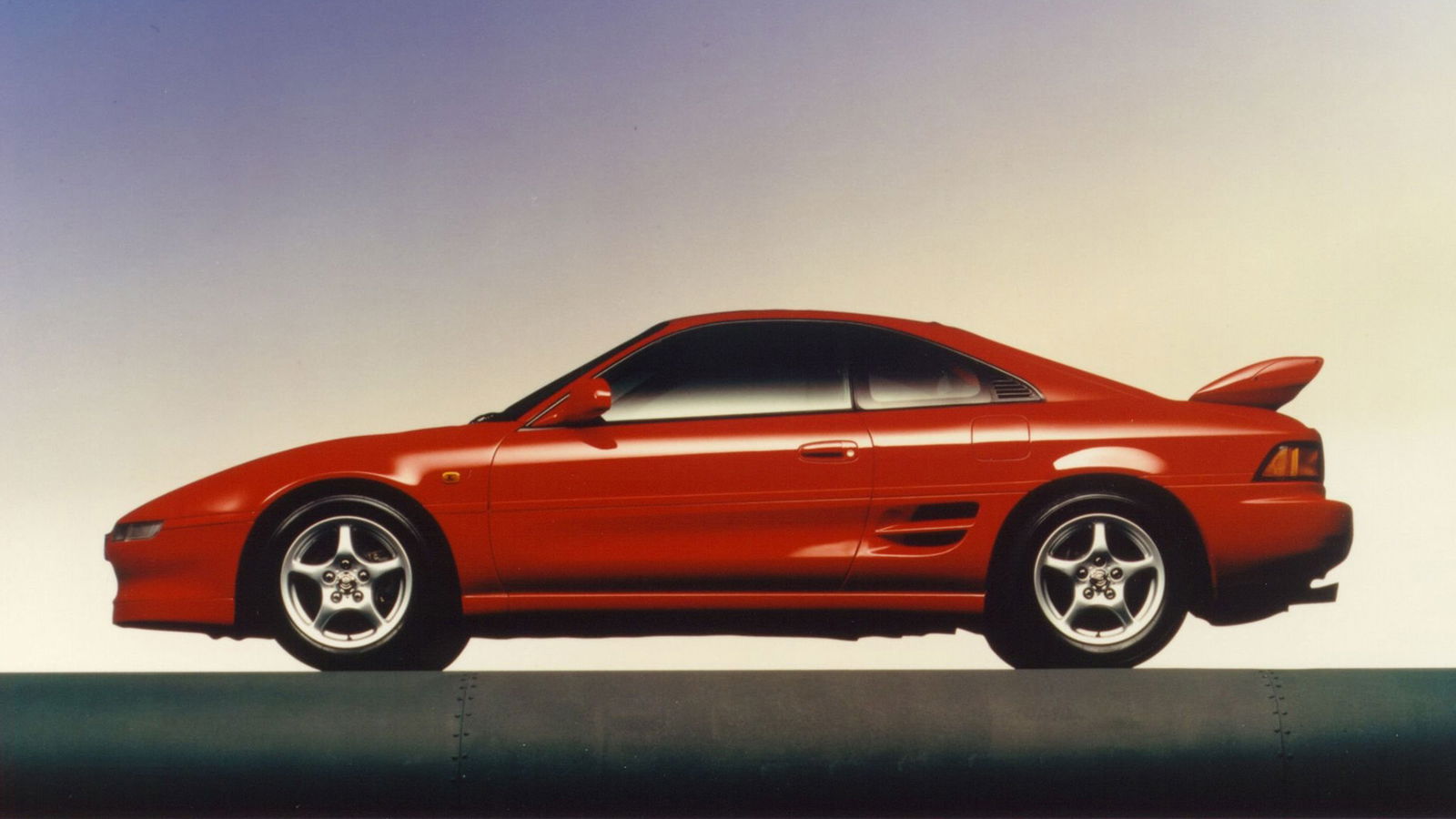
“What cheap rear-wheel-drive sports car should I get?” ask myriad young petrolheads, to which the default answer is “a Mazda MX-5”. The Mazda is an excellent and well-proven recommendation, but there is an often-overlooked, mid-engined alternative.
The Toyota MR2 has an enviable history of on-road entertainment at a bargain price. It’s less ubiquitous than the MX-5, which can make a good one harder to find, but you’ll stand out on the road.
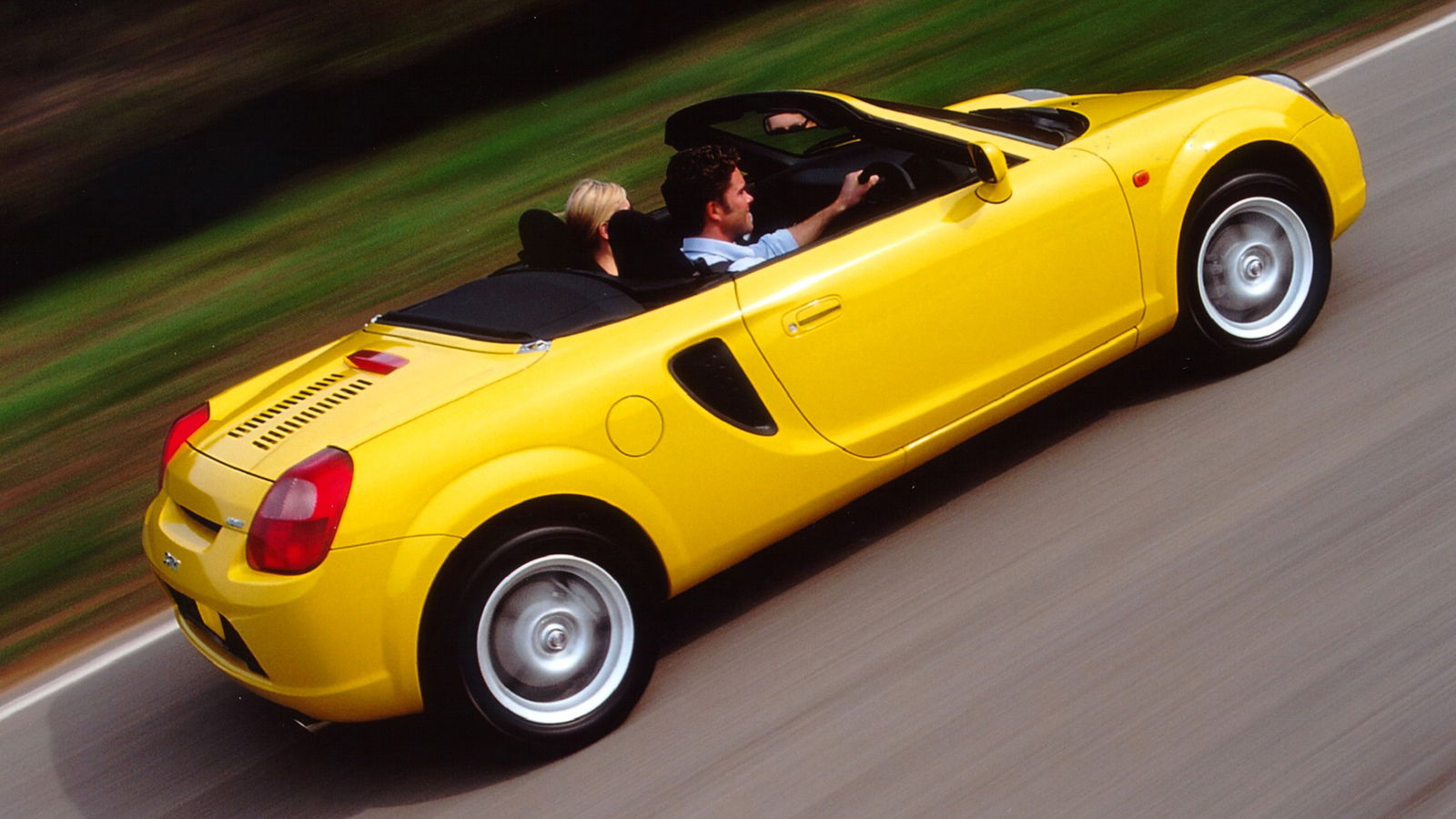
First produced in 1984, the Midship Runabout 2-Seater was named for its engine placement and seating layout, and was Japan’s first mass-produced mid-engined car. Almost a third of a million were sold worldwide over 23 years and three generations, making it a landmark in bringing exotic layout engineering to the masses.
All three generations of MR2 so far have shared a core recipe: a transverse-mounted inline-four engine mounted behind the seats, with rear-wheel drive and a low-slung driving position. Fully independent suspension makes for sharp handling, which, when combined with lively performance, led to the MR2 being referred to as “the poor man’s Ferrari”.
In the beginning…
Project “middie”, a design study for a light, fuel-efficient two-seater, began in 1976. Delayed by the global oil crisis, it resumed in 1980, with the engineers envisaging a modern successor to the Toyota Sports 800 of the 1960s. By 1981, the team, led by test engineer Akio Yoshida, had looked at various engine placements and settled on a transverse mid-engined, rear-wheel drive layout. And they had a prototype, named SA-X, to prove the concept.
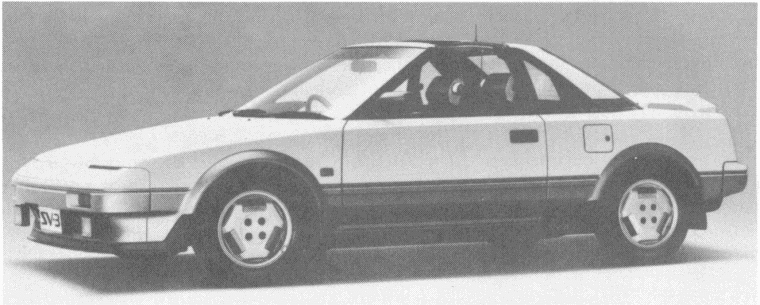
The design evolved, and by late 1983, Toyota revealed the SV-3 concept at the Tokyo Motor Show. This was essentially a near-production MR2 in all but a few details. Positive buzz about the SV-3 led to the green light for production. But before that, Lotus was brought in to help tune the suspension through engineer Roger Becker, and former F1 driver Dan Gurney, who thrashed prototypes around California's Willow Springs circuit to further develop the handling. By early 1984, the new fun, efficient and user-friendly mid-engined-sports car, nearly a decade in the making, was ready to launch.
First-generation Toyota MR2 (W10, 1984-1989)

Eventually, the first Toyota MR2 was launched in 1984, bearing the model code W10 (and known commonly as the AW11, although this technically refers to a specific version). It went on sale in Japan in June, and arrived in North America and Europe in 1985.
Its reputation preceded it, garnering critical acclaim from the off. Named as Japan’s Car of the Year for 1984/85 (beating the likes of the Honda CRX), the first MR2 featured a 1.6-litre 4A-GE inline-four engine shared with the AE86, with dual overhead cams (DOHC), 16 valves and around 122bhp on European shores. The Japanese domestic market also got a more economical base model, with a 1.5-litre 3A-LU engine packing 81bhp.
Weighing less than 1000kg, the Euro-spec MR2 could hit 60mph in 8.1 seconds and had a top speed of 124mph. A slick five-speed gearbox was standard, with an optional four-speed automatic. Reviewers praised the free-revving engine and its ability to outperform rivals like the Fiat X1/9, Alfa Sprint and Ford Capri.
Tuned mainly for agility, with independent suspension all round, the mid-engine balance gave a weight distribution of around 44:56 and a very low centre of gravity, which made the MR2 very sprightly. It kept pace with far more powerful cars on twisty roads and was free from the various electronic suspension systems that were starting to be introduced on sports cars at the time.
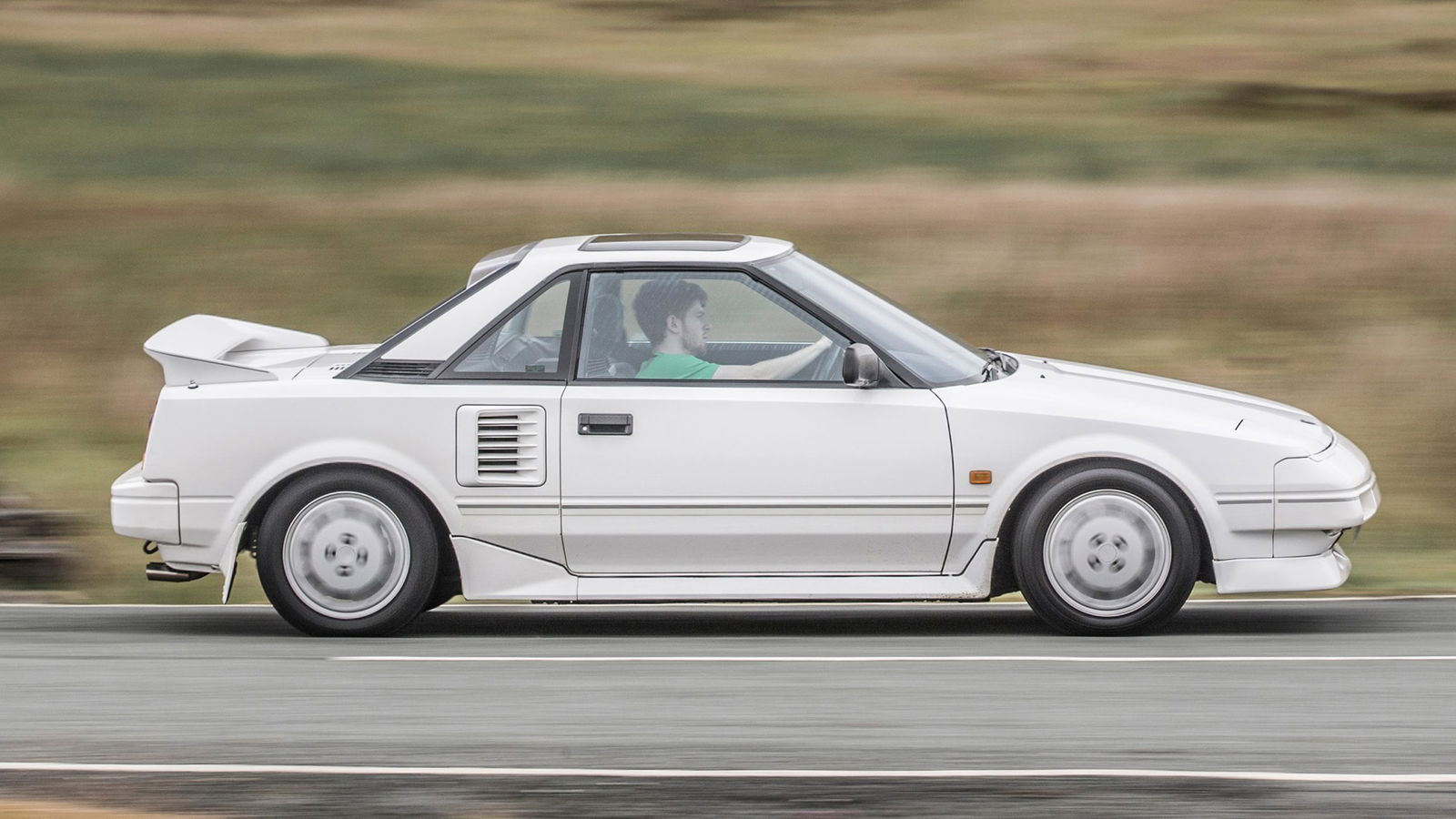
Initially launched as a coupe, the T-top targa version launched in 1986, adding around 30kg but opening up the driver and passenger to the fresh air. UK cars had a generous level of standard equipment, broadly equivalent to the high-spec G-Limited trim in Japan. Running changes were introduced through 1986 and 1987, including a slightly stronger transmission, minor engine tweaks, a thicker rear anti-roll bar and a couple of exterior updates. These improvements addressed some issues with early production cars.
In 1987, responding to American demand for more power, Toyota supercharged the MR2 by adding a Roots charger to the 1.6 4A-GE engine, with strengthened internals to handle the extra oomph. Power rose to 145bhp, cutting the 0-60mph time to 6.5 seconds. You can spot a supercharged Mk1 by its distinctive side intakes and Supercharger badging. This hotter MR2 was never officially sold in Europe – only in Japan and North America – but various enthusiasts imported them privately. Still, the Mk1 Supercharger remains rare and highly sought after for its tunability.
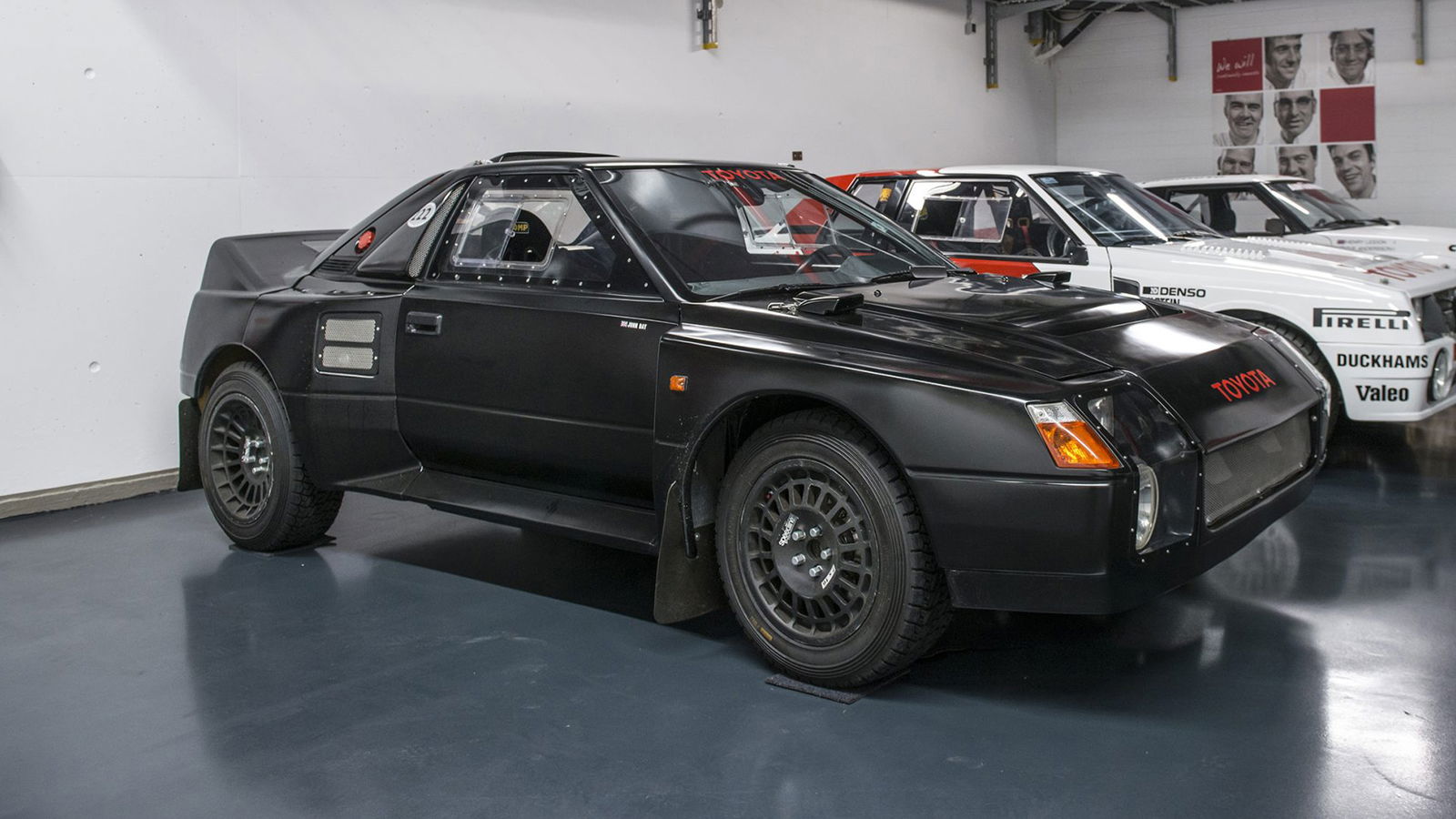
Between 1985 and 1989, some 13,580 Mk1 MR2s were sold in the UK, which far exceeded Toyota’s expectations. Globally, 163,000 Mk1s were built and gathered numerous awards, proving that Toyota could build an exciting driver’s car. To capitalise on this new sporty image, Toyota set up a one-make racing series for MR2s in the UK and USA, and Toyota Team Europe developed a wild MR2 222D Group S rally prototype for the World Rally Championship. Sadly for rally fans, Group S was cancelled and the four-wheel-drive, 600bhp monster never saw competition. But still, the reputation of the MR2 was well established.
Second-generation Toyota MR2 (W20, 1989-99)

The second-generation MR2, launched in 1989, took a very different approach. It grew in size, weight and complexity, and moved the MR2 upmarket.
Where the Mk1 was all angles and minimalism, the Mk2 (known as the SW20) featured Italian-inspired curves, and more than a passing resemblance to the Ferrari 348/355. Larger, with more equipment and power, it was nevertheless small enough to be classified as a compact sports car under Japan’s size regulations.
The SW20 MR2 was 245mm longer and 30mm wider than the W10, with an 80mm longer wheelbase, and sat 10mm lower for a more planted stance. The body, designed by a team led by Kunihiro Uchida, gave the MR2 a more aggressive, exotic look while still keeping functional aerodynamics. Maintaining five bulkheads for extra rigidity, it retained the independent suspension setup but with revised geometry for higher cornering speeds. The T-top roof stayed, as well as the regular hardtop, and some markets got a full sunroof option, too.
The increased weight (between 1150kg and 1250kg, depending on spec) was offset by more powerful, larger engines. In Japan and Europe, the standard engine was the 2.0-litre 3S-GE inline-four, a DOHC, 16-valve unit with between 160 and 170bhp, depending on the year – a healthy boost over the Mk1.
However, the UK got its own base model using the Toyota Carina’s 2.0-litre 3S-FE engine. It had a more modest 119bhp, but was a chunk cheaper. It was sold from 1990 to 1992, and you can recognise it by its lack of front fog lamps or rear spoiler. The top-spec engine was the turbocharged model, with a 3S-GTE unit (also used in the Celica GT-Four) pushing out 225bhp.
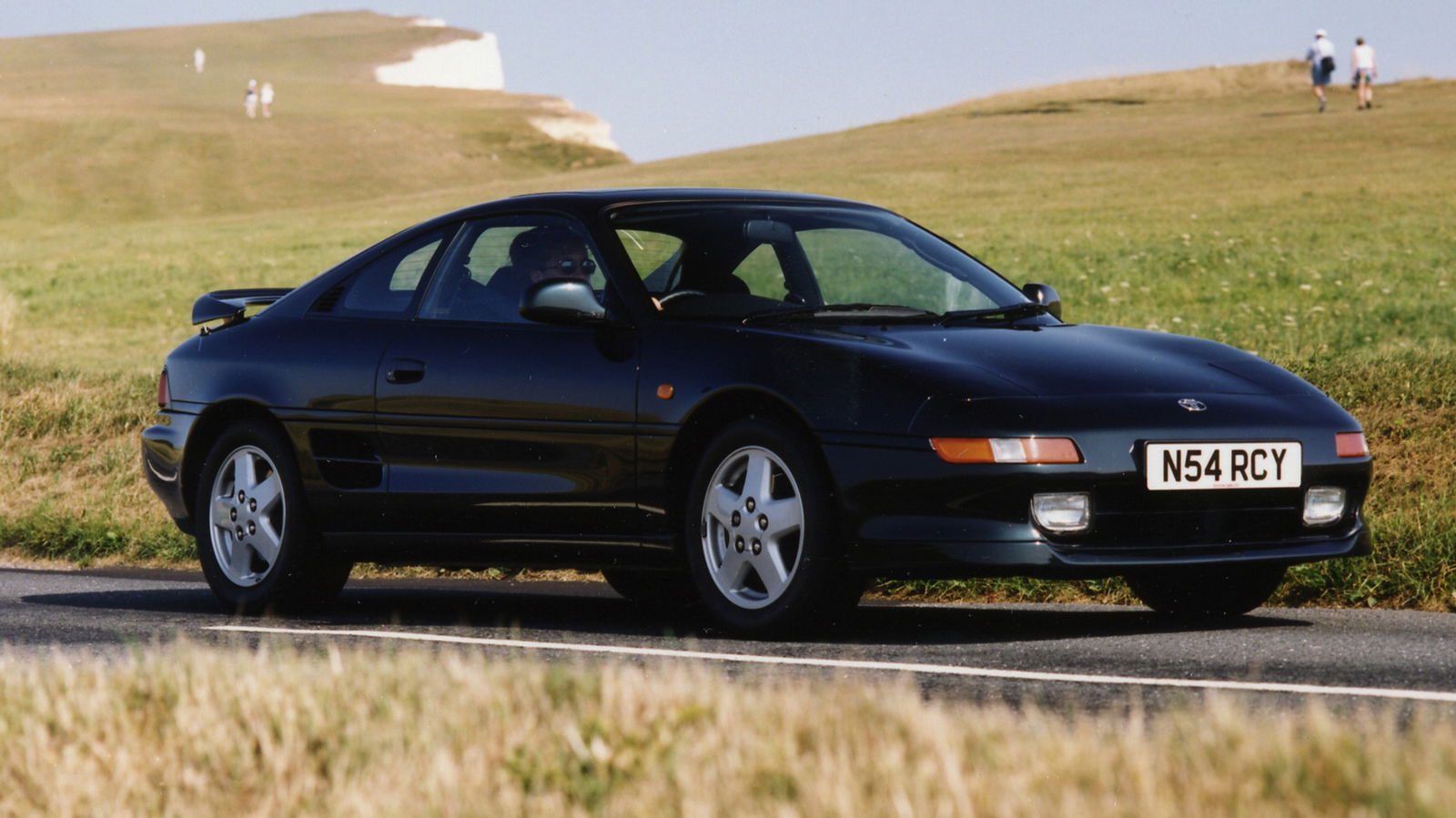
The result was excellent… mostly. Reviews at the time praised the MR2 for retaining the driver involvement of the original while upping the excitement levels and performance with its extra power. However, it was particularly prone to lift-off oversteer, which could take less experienced drivers on a quick trip to Spinsville.
Toyota addressed this in late 1992, with revised suspension geometry, wider rear tyres, and power steering, all to give Joe Public more of a chance of catching the MR2 if things went unintentionally sideways. To quote the engineers, the changes were made “for drivers whose reflexes were not those of Formula One drivers”.
The result was more user-friendly, but some felt that the razor-sharp edge of the early Mk2s had been neutered. MR2 enthusiasts refer to the 1990-92 cars as Rev 1 models, differentiating them from later versions chiefly because of the suspension revisions.
Incidentally, the MR2 community identifies five revisions (Rev 1 to Rev 5) during the SW20’s production, which correspond to various minor changes in styling, engine tuning and equipment through the 1990s.
Personal feelings notwithstanding, by the mid-1990s, the MR2 was widely regarded as a very balanced car, capable of superb handling when driving properly, albeit one that would reward skill and punish overconfidence in the traditional mid-engined manner.
It’s perhaps unsurprising, given its acclaim, that the second-generation MR2 enjoyed a long production run of nearly ten years. During that time, a few special versions were developed.
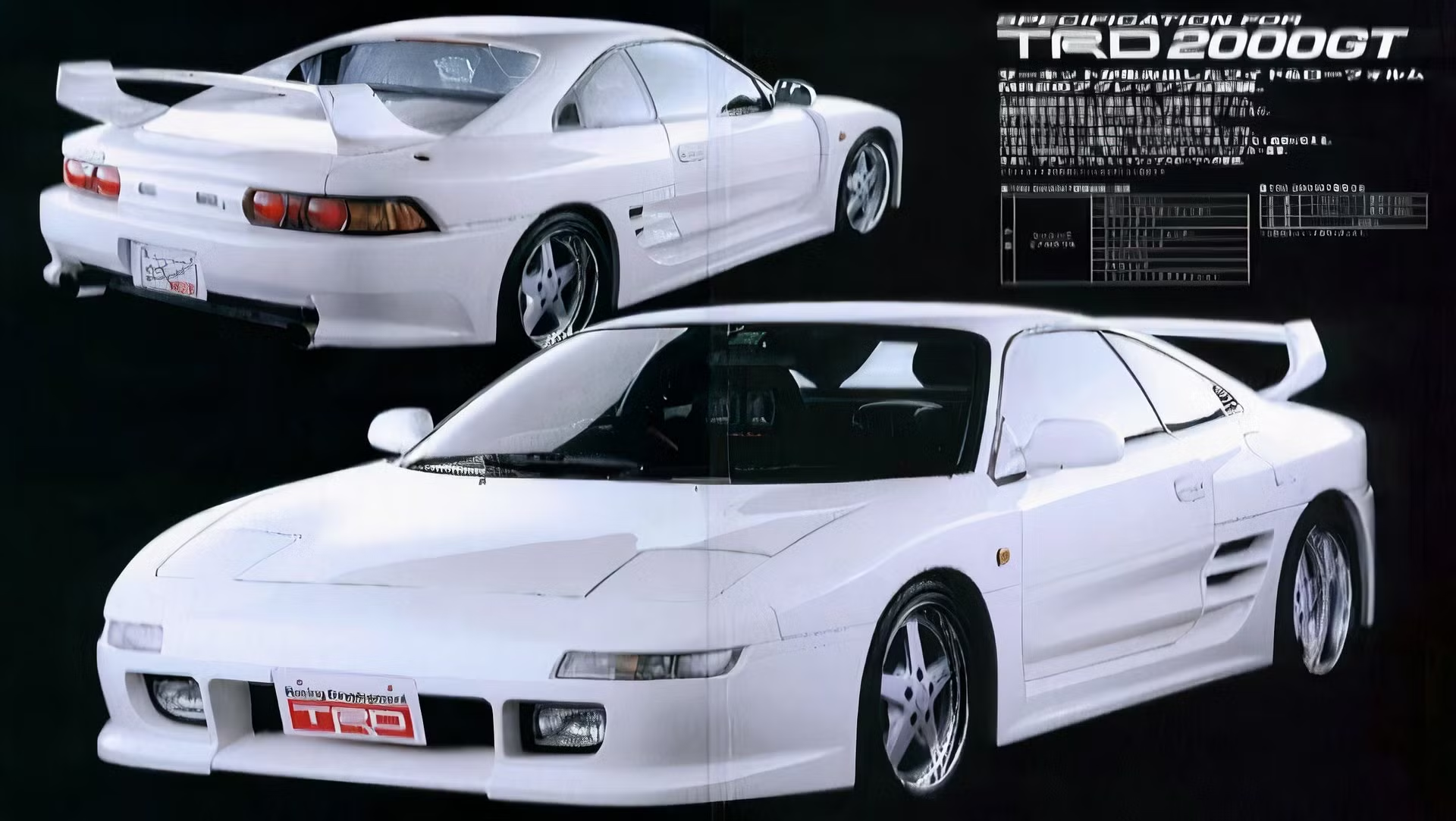
In 1998, Toyota’s tuning arm, Toyota Racing Development (TRD), offered a factory-authorised wide-body conversion, called the TRD2000GT. This limited edition, inspired by Toyota’s GT racing success in Japan, had a dramatic fibreglass body that added around 100mm to the car’s width, and could be ordered with engine upgrades that pushed power north of 245bhp. Only 35 were officially built – some owners retrofitted the bodykits to standard MR2s, but the authentic ones are prized collectables.
The same team – Toyota Technocraft – had earlier released the MR2 Spider, a limited run of full-convertible MR2s with no T-bar. Basically, a coachbuilt experiment to create an open-top MR2, the Spiders were only sold in Japan, and only a few dozen were made, making them another hot property for collectors. They featured a one-piece removable hard roof panel and a bespoke engine cover.
Beyond factory specials, tuners like TOM’s (Toyota’s racing partner) offered modified MR2s, such as the TOM’s T020, which had a 2.2-litre engine with 235bhp and a host of chassis upgrades. These underlined the Mk2’s popularity with tuners in the 1990s.
However, by the end of the decade, sports car sales were down, and the Mk2 MR2 was getting old. North America had already discontinued the car after the 1995 model year due to slowing sales, although they continued to ship to other markets, staying around in Europe until early 2000. By the end of its life, the MR2 had evolved from a simple fun runabout into something more mature and GT-like, which meant a rethink was needed for the next generation.
Third-generation Toyota MR2 (W30, 1999-2007)
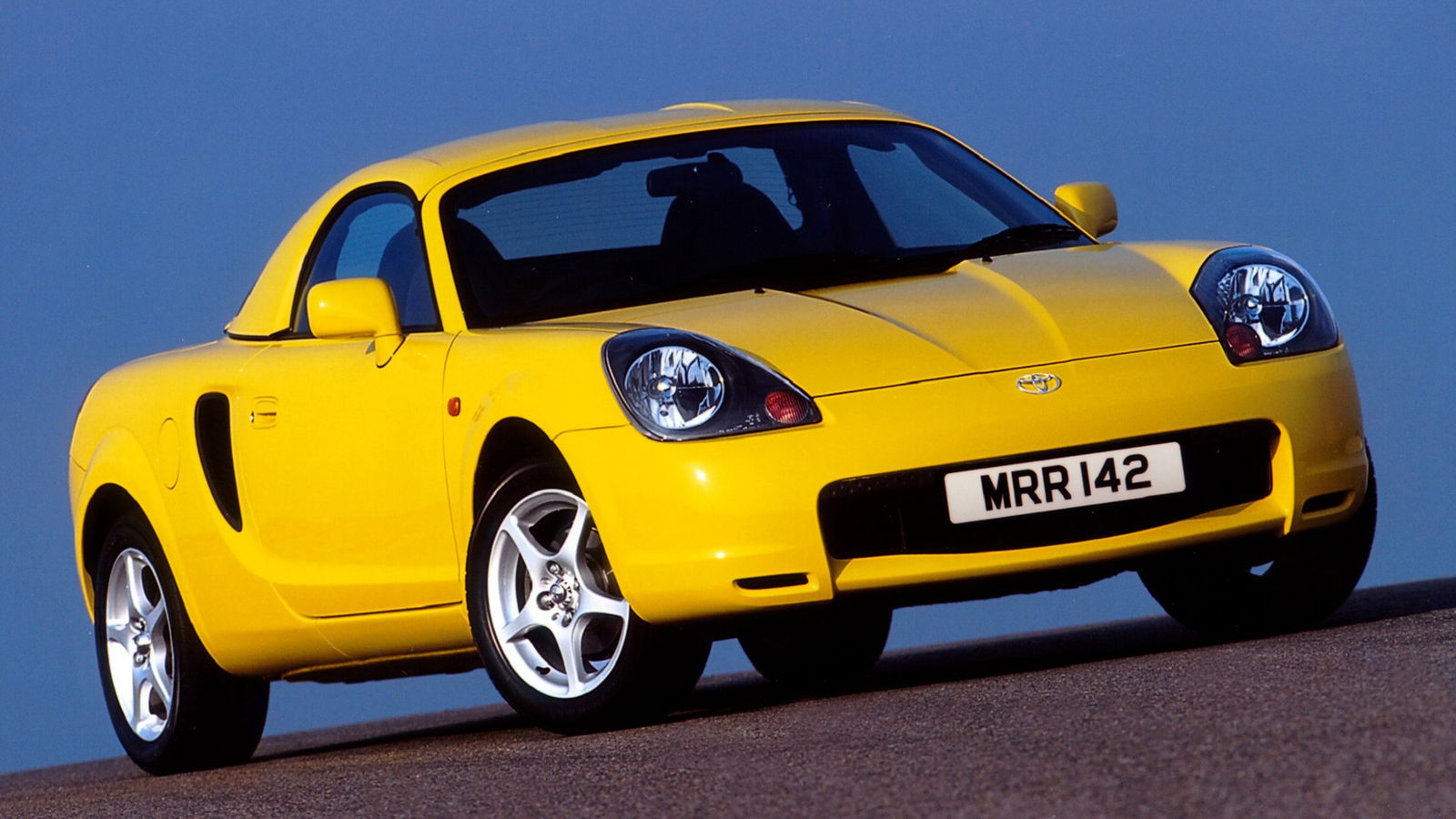
The third-generation MR2, revealed in October 1999, was another radical reimagining of the concept, intended to “break the cycle of growth” seen with the SW20. Toyota realised that to recapture the spirit of the nimble AW11, the third iteration needed to ditch some weight, complexity and even some practicality.
The result was the W30 MR2, known in Europe as the MR2 Roadster, in the US as the MR2 Spyder and in Japan as the MR-S. It followed the 1997 Toyota MR-S concept car, and for the first time, was convertible-only, with the coupe and the T-top models ditched. This was very much a trend of the time, with key rivals including the Porsche Boxster and the Mazda MX-5. More than a few people referred to the Toyota MR2 as a Baby Boxster.
Led by chief engineer Tadashi Nakagawa, the Mk3 project prioritised lightness, achieving a starting weight of just 960kg – less than the Mk1. A dramatic 300kg reduction on the Mk2 was achieved through drastic simplification. The separate engine-bay luggage compartment was jettisoned, which meant one less bulkhead and a lighter structure (storage was limited to a small 'frunk' and a cubby behind the seats). The manual folding soft-top was simple and lightweight, with an 18kg optional hardtop available for those who wanted year-round use.
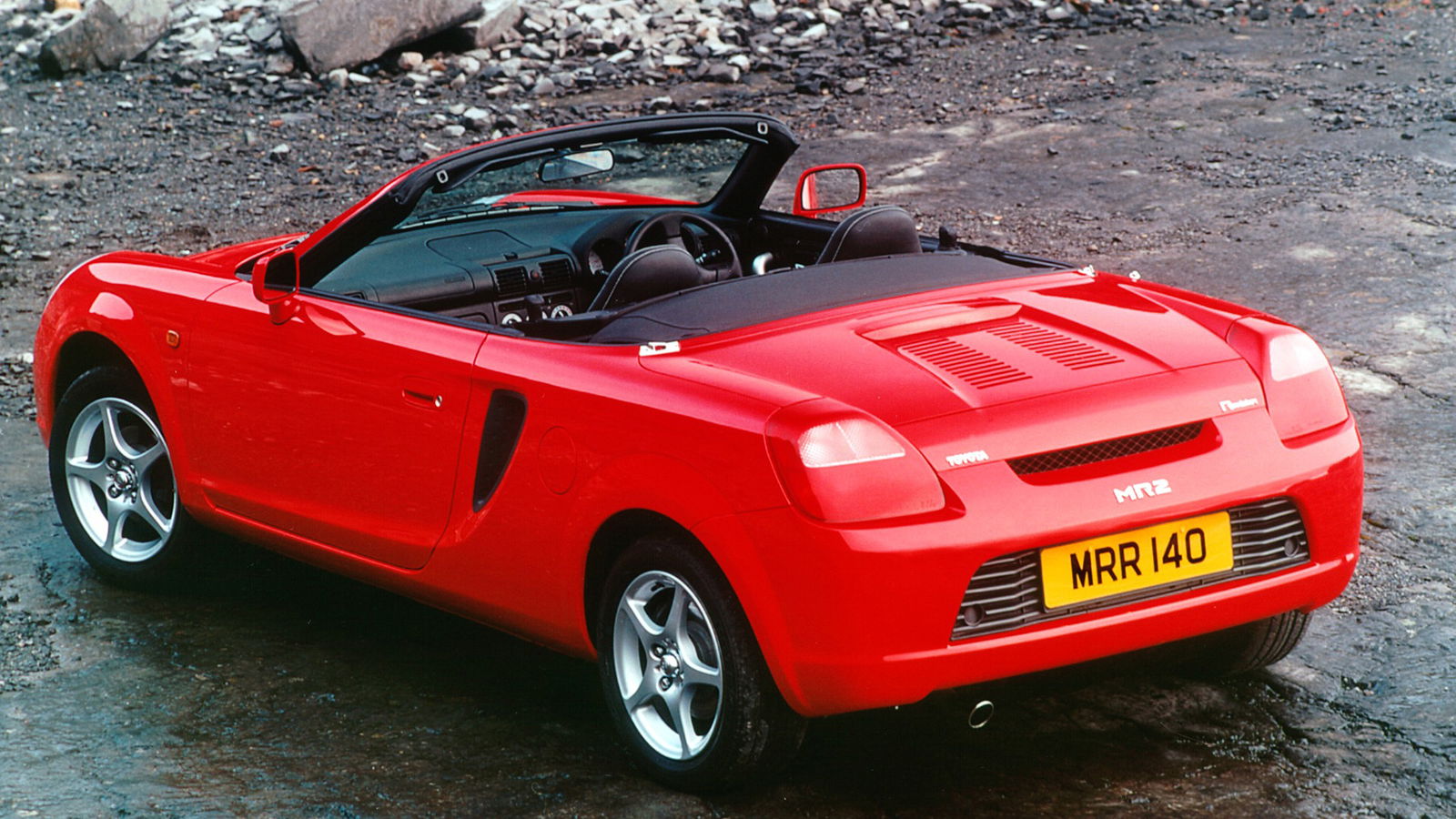
The car was smaller, too – nearly the size of the Mk1 – with more modern, rounded styling and a focus on aero efficiency and low production costs.
Just one powertrain was available – the all-aluminium 1.8-litre 1ZZ-FE inline four (shared with the Celica and Corolla) with 138bhp at launch. While this was a drop compared to the outgoing turbo model, the excellent power-to-weight ratio meant performance was still respectable. There was no turbo version this time around, with the focus on handling rather than straight-line speed. A five-speed manual was standard, while a five-speed sequential manual transmission (SMT) was introduced in 2001 – essentially a robotised manual box. That evolved to a six-speed version in 2003, but purists still preferred the manual, which was considerably quicker in acceleration and more fun to drive.
With a mega-low centre of gravity and mid-engine balance, and very little inertia, reviews for the Mk3 were excellent. Its superb handling and agility were widely praised, as was its crisp, communicative steering and its ease of control at the limit. A certain Tiff Needell, who knows a thing or two about handling, went as far as to call it one of the best handling cars, regardless of price.
That said, a few people grumbled about the straight-line speed compared to the contemporary hot hatches and other V6 roadsters. Some owners dropped in turbos or engine-swapped to something with more grunt.
The Mk3 was facelifted in 2002 with new bumpers and bigger rear wheels for extra grip, together with a suspension overhaul and extra body stiffness. More changes were made in 2004, strengthening the bodyshell to meet crash standards.
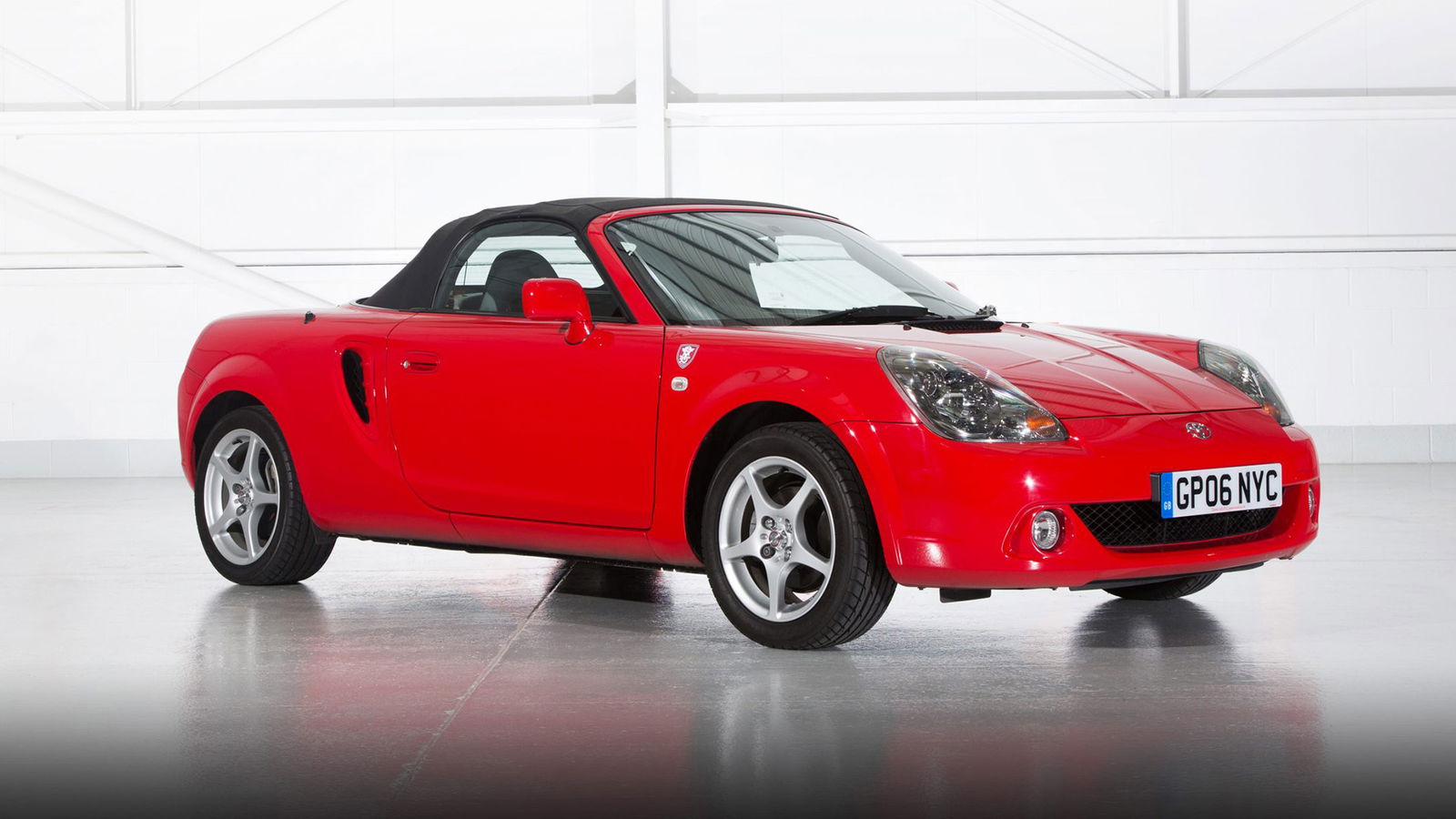
Towards the end of production, Toyota Team Europe offered a dealer-installed turbo kit that boosted power to 182bhp and was sold as the TTE Turbo package. It was pricey and consequently rare, but showed the tuning potential of the Mk3 platform.
However, by the mid-2000s, the popularity of two-seat sports cars was declining globally. While the Mk3 MR2 had sold well in its first couple of years, demand dropped sharply thereafter. In 2004, Toyota announced that it was stopping sales of the MR2 in several markets, and while European sales continued until 2007, the end of the line was in sight.
To mark its demise, Toyota GB offered the MR2 Roadster TF300 edition in 2006, a limited, numbered edition restricted to 300 units. Each had a numbered badge stitched into the seat, a sports exhaust, special alloys and leather and Alcantara upholstery, as well as a certificate signed by the Toyota GB chairman. Car 300 of 300 leaving the showroom marked the end of MR2 sales in the UK. Globally, production stopped in July 2007.
Legacy and Future Prospects
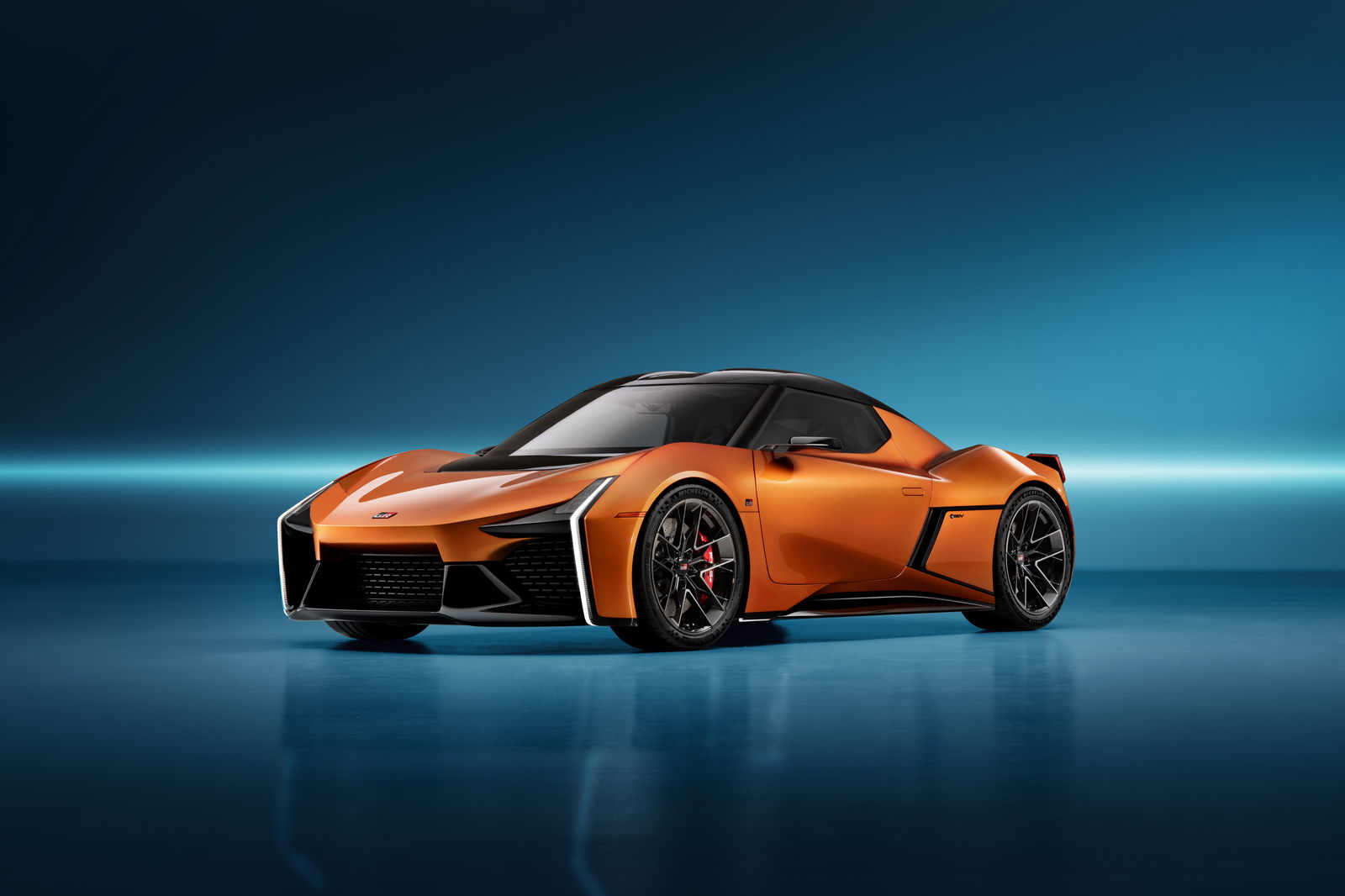
Throughout its three generations, the Toyota MR2 remained true to its core identity – a (relatively) affordable mid-engined sports car. Its legacy includes myriad enthusiast clubs, tuning communities and motorsport entries, and each generation boasts a devoted fanbase.
Rumours of a revival have persisted ever since the third-generation ceased production, and Toyota execs have hinted on several occasions of a desire to bring back some kind of mid-engined sports car. In 2025, could it be that there’s fire behind this long-reaching plume of smoke? Toyota has yet to confirm anything, but credible rumblings give us at least a modicum of confidence that we could see a new MR2 appear in 2026. It’ll likely have four-wheel drive and some kind of electrification system attached to Toyota’s new 2.0-litre inline-four, which has been designed for future GR cars.
While details are vague, the MR2’s reputation looms large. Any new model carrying the MR2 badge, or even just its spirit, will have big shoes to fill – it would need to be light, agile, affordable and imbued with that Midship Runabout character. As the recent revamp of the Supra showed, it’s not enough to simply make a good car – it needs to match up to the legacy of what is now a cult classic.



Comments